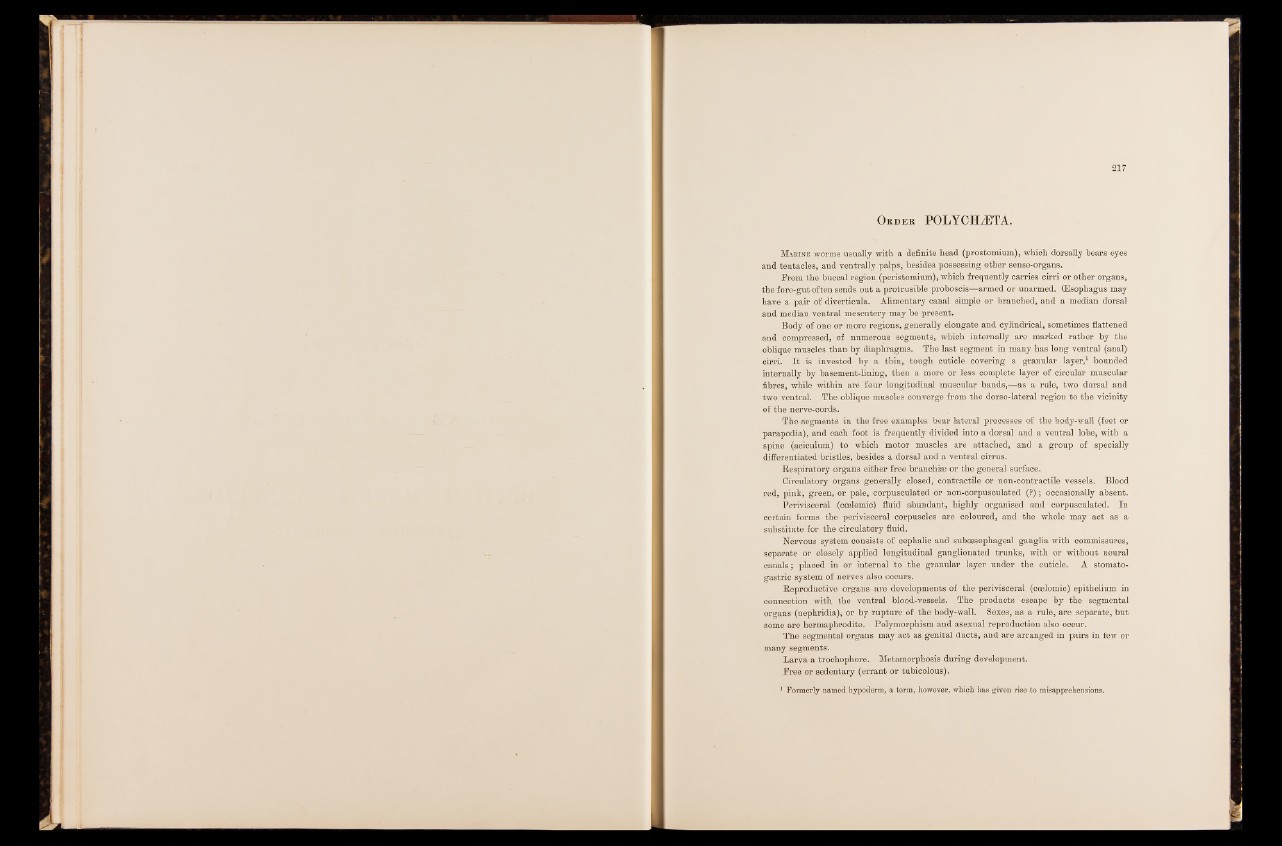
Order POLYCELETA.
Marine worms usually with a definite head (prostomium), which dorsally bears eyes
and tentacles, and ventrally palps, besides possessing other sense-organs.
From the buccal region (peristomium), which frequently carries cirri or other organs,
the fore-gut often sends out a protrusible proboscis—armed or unarmed. (Esophagus may
have a pair of diverticula. Alimentary canal simple or branched, and a median dorsal
and median ventral mesentery- may be present.
Body of one or more regions, generally elongate and cylindrical, sometimes flattened
and compressed, of numerous segments, which internally are marked rather by the
oblique muscles than by diaphragms. The last segment in many has long ventral (anal)
cirri. It is invested by a thin, tough cuticle covering a granular layer,1 bounded
internally by basement-lining, then a more or less complete layer of circular muscular
fibres, while within are four longitudinal muscular bands,—as a rule, two dorsal and
two ventral. The oblique muscles converge from the dorso-lateral region to the vicinity
of the nerve-cords.
The segments in the free examples bear lateral processes of the body-wall (feet or
parapodia), and each foot is frequently divided into a dorsal and a ventral lobe, with a
spine (aciculum) to which motor muscles are attached, and a group of specially
differentiated bristles, besides a dorsal and a ventral cirrus.
Respiratory organs either free branchiae or the general surface.
Circulatory organs generally closed, contractile or non-contractile vessels. Blood
red, pink, green, or pale, corpusculated or non-corpusculated (?); occasionally absent.
Perivisceral (ccelomic) fluid abundant, highly organised and corpusculated. In
certain forms the perivisceral corpuscles are coloured, and the whole may act as a
substitute for the circulatory fluid.
Nervous system consists of cephalic and subcesophageal ganglia with commissures,
separate or closely applied longitudinal ganglionated trunks, with or without neural
canals; placed in or internal to the granular layer under the cuticle. A stomato-
gastric system of nerves also occurs.
Reproductive organs are developments of the perivisceral (coelomic) epithelium in
connection with, the ventral blood-vessels. The products escape by the segmental
organs (nephridia), or by rupture of the body-wall. Sexes, as a rule, are separate, but
some are hermaphrodite. Polymorphism and asexual reproduction also occur.
The segmental organs may act as genital ducts, and are arranged in pairs in few or
many segments.
Larva a trochophore. Metamorphosis during development.
Free or sedentary (errant or tubicolous).
1 Formerly named hypoderm, a term, however, which has given rise to misapprehensions.